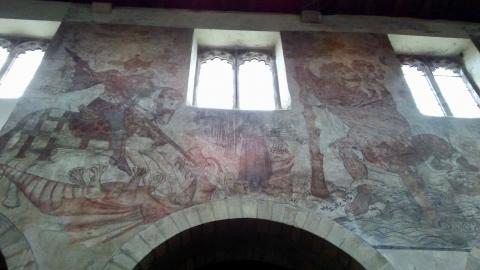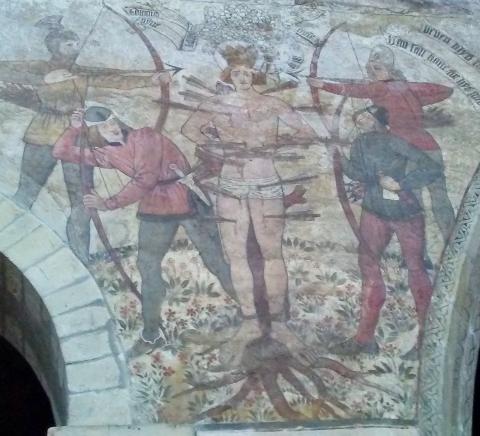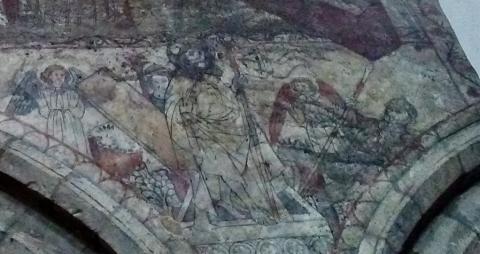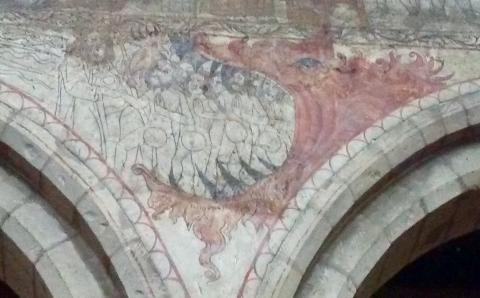Pickering’s Pictures

Pickering’s parish church of Saints Peter and Paul is notable for its incredible collection of wall paintings. Completed around 1450, they were white-washed 90 years later when the state church became Protestant and such images were understood to become idolatrous foci of devotion. Ironically, this coat of paint probably preserved them from later generations’ well-meaning attempts to brighten them up or update the fashions. So although I approve of Edward VI’s team of painters and decorators, I’m also rather pleased they have been preserved and uncovered.
Some of the images are particularly obnoxious to my Protestantism- the coronation of Mary as Queen of Heaven, for instance. Others depict more biblical scenes such as the dance of Salome and John the Baptist’s beheading. Some show the martyrdoms of saints, such Thomas a Becket, King Edmund and Katherine of Alexandria. Others urge the medieval worshipper to observe the 7 virtues of tending the sick, offering food and drink to those who hunger and thirst, and visiting prisoners etc.

The best for me are the resurrection of Christ, at which a Roman soldier, dressed as a fifteenth century English man-at-arms, flies backwards at the divine force of power (below, far right). The Wars of the Roses may have been fought at the time of painting. This would have equipped the artists with detailed knowledge of military dress, as well as a desire to see such pointless conflict swept away by the power of Christ’s new life.

The other is also of Christ, between His death and resurrection, going down to hell to liberate its believing captives, first and foremost being Adam and Eve. Adam offers Christ the apple whose plucking precipitated the very fall He had come to undo.

I’m still no fan of overly decorated churches and their depiction of Romish myths, but the historian within me loves this tangible link to our late medieval ancestors. For folk who could not read the Bible, and for whom it was forbidden even if they could, these images may have helped them recall some scriptural truth. When the Reformation liberated the Bible, such images were no longer required, for people could hear the Word of God preached with purity.
- Log in to post comments


 Sunday Worship 10.45am & 6.00pm
Sunday Worship 10.45am & 6.00pm